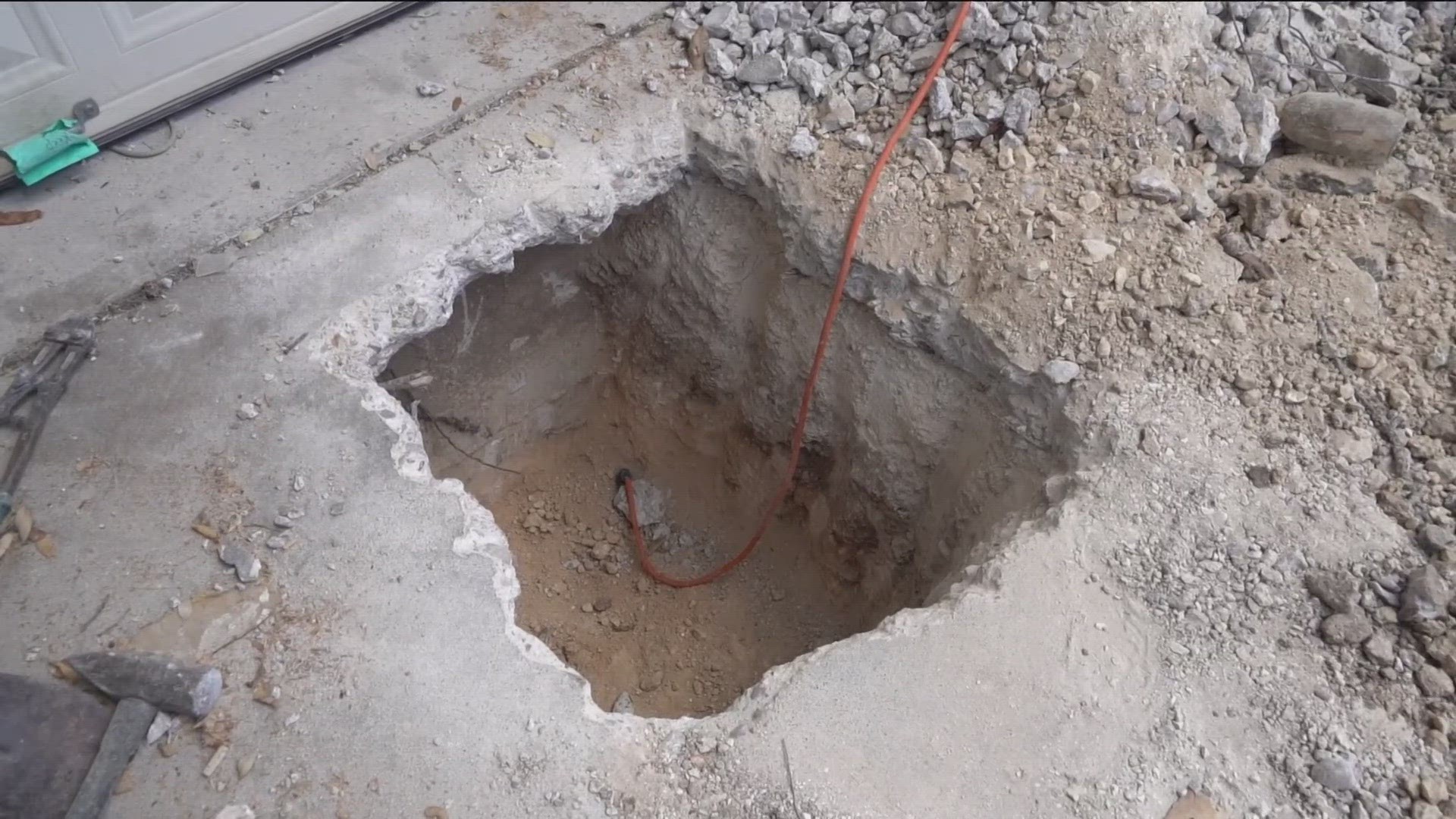AUSTIN, Texas — The drought in Central Texas has made homes vulnerable.
The arid weather can lead to dry soil that can cause your home's foundation to sink into the ground. The solution? Watering your house.
But water restrictions across the region could make that difficult.
Dean Zubkoff is a foundation specialist with CenTex Foundation Repair. He explained that typically a new house is leveled out, and when extreme weather starts to settle in, that's when problems can arise. Cracks in the walls are a telltale sign that the home is either shifting or tilting, but he noted that that only means there's some activity going on within the house and it's not a cause for concern yet.
"If you see separation or if you see diagonal cracks, those are signs of your foundation moving downward," Zubkoff said.
Below is a "symptom sheet" of what homeowners should look out for:


Zubkoff explained that once the foundation gets to a point of separation, crews will start what they call the "non-intrusive" process of lifting the house back into place. This means working from the outside. If the house moves and the issues are left untreated, that's when workers will have to work from the inside to stabilize it.
"When the house moves, it can damage the house. The worst case is your drain lines that are sitting underneath your sewer lines," Zubkoff said.
The crucial difference, according to Zubkoff, is to know when the home gets to that point and to keep the ground around the home saturated – something that has become an issue with water restrictions and lack of rain.
Zubkoff advised homeowners under current restrictions to water as much as they can when they are allowed to. But he and CenTex Foundation Repair anticipate crews will be just as busy with repairs as they were last year.

